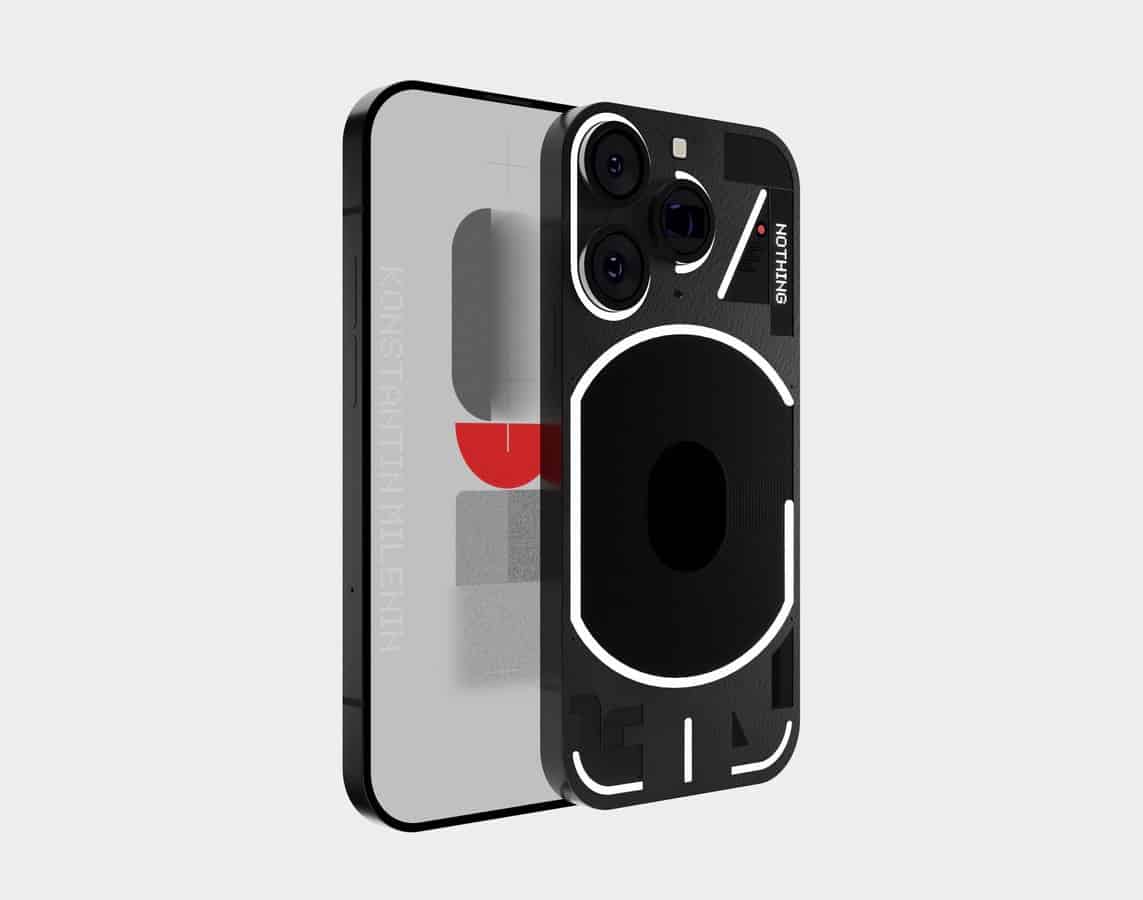Is Nothing Phone (2) The Future Of Modular Smartphones?

Table of Contents
The Nothing Phone (2)'s Design and its Perceived Modularity
Glyph Interface and Aesthetic Modularity
The Nothing Phone (2)'s Glyph interface is undeniably a standout feature. This customizable lighting system allows users to personalize notifications, creating a unique visual experience.
- Different Glyph notifications: The Glyph system uses LED lights to display incoming calls, charging status, and app notifications in a visually appealing way.
- User customization options: Users can select different Glyph patterns and assign them to specific contacts or apps.
- Aesthetic appeal as a selling point: The Glyph interface is a major selling point, enhancing the phone's overall aesthetic appeal and making it stand out from the competition.
This aesthetic modularity, while not physical, significantly contributes to a feeling of personalization, making the phone feel unique to the owner. The Glyph system enhances user experience and creates a distinct visual identity, setting it apart in a market saturated with similar-looking devices.
Physical Modularity (or Lack Thereof)
While the Nothing Phone (2) boasts a striking design and software-driven personalization, its physical modularity is limited. It doesn't offer the same level of user-replaceable components as truly modular phones of the past.
- Ease of battery replacement: While battery replacement is theoretically possible, it's not designed for easy user access and likely requires professional assistance.
- Screen repairability: Screen repair is also likely to require professional service, rather than being a simple DIY task.
- Availability of replacement parts: The availability and cost of replacement parts are yet to be fully assessed, and this might pose a challenge for long-term repairability.
Compared to phones with truly modular designs, where users could easily swap out components like cameras or processors, the Nothing Phone (2) falls short. Its design prioritizes a sleek, unified aesthetic over extensive physical modularity.
Sustainability and the Argument for Modular Phones
Repairability and its Environmental Impact
The environmental benefits of easily repairable phones are undeniable. Extending a phone's lifespan reduces the demand for new devices, mitigating the significant environmental impact of electronic waste (e-waste).
- Reduced e-waste: Repairing instead of replacing reduces the volume of discarded electronics contributing to landfills and environmental pollution.
- Longer lifespan: Easily repairable phones can last significantly longer, delaying the need for a replacement.
- Lower carbon footprint: Manufacturing new phones consumes significant energy and resources, leading to a large carbon footprint. Repairing extends the life cycle of the device and thereby reduces its overall environmental impact.
The Nothing Phone (2), while not fully modular, offers slightly better repairability than many competitors, though this is still limited.
The Role of Modular Design in Extending Product Lifespan
Modularity is key to extending a phone's lifespan. By enabling users to replace individual components, modularity avoids premature obsolescence.
- Replacing damaged components: A broken screen or battery can be replaced individually, instead of requiring the entire phone to be replaced.
- Upgrading individual parts: Users could potentially upgrade components, such as the camera or processor, as technology advances.
- Adapting to future technological advancements: Modular design allows for more flexibility to adapt to new technologies without needing a full device replacement.
The cost-effectiveness of repairing a modular phone versus buying a new one is significantly in favor of repair, making it a more sustainable and economical choice in the long run.
The Future of Modular Smartphones: Beyond the Nothing Phone (2)
Technological Challenges and Barriers to Widespread Adoption
Despite the advantages, several challenges hinder the widespread adoption of modular smartphones.
- Manufacturing complexities: Creating truly modular devices presents significant manufacturing complexities.
- Increased costs: Modular designs can potentially increase manufacturing and material costs.
- Consumer acceptance: Consumers might be hesitant to adopt modular phones due to unfamiliarity or perceived complexity.
- Software compatibility: Ensuring seamless software compatibility between different modular components is crucial and complex.
These technical difficulties make the creation and mass production of truly modular phones challenging.
Potential for Future Innovation in Modular Phone Design
Despite current limitations, the future holds potential for significant advancements in modular smartphone technology.
- Advances in connector technology: Improved connector technology could enable faster, more reliable, and more robust connections between modular components.
- Standardized components: Standardization of components would simplify manufacturing and make repairs easier.
- Open-source designs: Open-source designs would allow greater community involvement and innovation in modular phone development.
These advancements could help overcome the current limitations and pave the way for a wider adoption of modular smartphones.
Conclusion
The Nothing Phone (2), while offering some level of design personalization with its Glyph interface, falls short of being a fully modular smartphone. Its limited physical modularity highlights the existing challenges in achieving truly repairable and customizable devices. However, the environmental benefits of modularity, coupled with the growing demand for sustainable technology, highlight the importance of pursuing this design philosophy. The future of smartphones may indeed lie in embracing modularity—it offers a pathway towards more sustainable, longer-lasting, and customizable devices. Are you ready for the future of modular smartphones?

Featured Posts
-
 Asparagus A Deep Dive Into Its Health Benefits
Apr 30, 2025
Asparagus A Deep Dive Into Its Health Benefits
Apr 30, 2025 -
 Alraklyt Fy Swysra Rqm Qyasy Jdyd Yusjl
Apr 30, 2025
Alraklyt Fy Swysra Rqm Qyasy Jdyd Yusjl
Apr 30, 2025 -
 Gambling On California Wildfires A Growing Trend The Los Angeles Example
Apr 30, 2025
Gambling On California Wildfires A Growing Trend The Los Angeles Example
Apr 30, 2025 -
 Cnils New Ai Regulations Practical Steps For Businesses
Apr 30, 2025
Cnils New Ai Regulations Practical Steps For Businesses
Apr 30, 2025 -
 Schneider Electric Surpasses 2024 Sustainability Goals A Program Review
Apr 30, 2025
Schneider Electric Surpasses 2024 Sustainability Goals A Program Review
Apr 30, 2025
